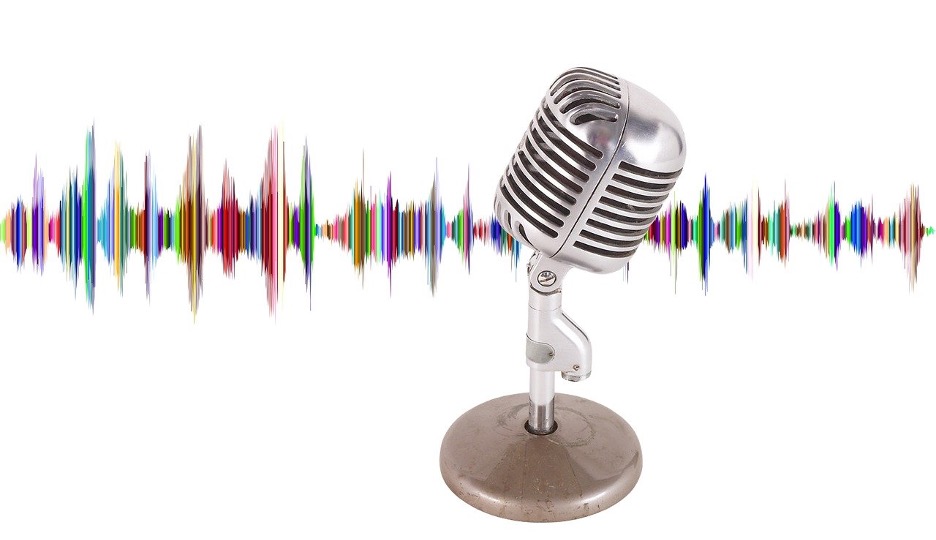
Podcasts: How to Give a Voice to Your Content
Podcasts became a popular medium of information exchange and communication in the late 1990s and early 2000s. Since then, their popularity has grown steadily, with an estimated 32% of Americans now tuning in to at least one podcast per month.
Podcasts offer a unique and intimate way to connect with an audience. They're easily accessible, so people can listen while they're commuting, working out, or doing chores. And because people can listen at their own pace, podcasts offer a level of engagement that other mediums can't match.
What is a Podcast?
A podcast is basically a radio show that you can listen to at your convenience. Podcasts are usually free of charge and easy to find through iTunes or other directories. Although some people do pay for certain shows, the majority of them are free.
Podcasts have been around for a while, but they have only recently become popular. In the past year, podcasts have really taken off and there are now many different types of podcasts available on a variety of topics.
Podcasts usually involve one or more hosts talking about a particular topic, providing commentary and analysis on current events, or interviewing guests. Podcasts are like pre-recorded radio shows that you can listen to at your convenience.
The beauty of podcasts is that anyone can create one. You don’t need any expensive equipment or software. All you need is a microphone, some free recording software, and a topic to talk about. That's why it has become a popular marketing strategy for businesses and individuals to promote their brand, product, or message.
Where Can You Listen to Podcasts?
You can listen to podcasts on your computer, phone, or any other mobile device. Popular podcast platforms are Spotify, iTunes, Stitcher, and Google Play.
You can also listen to podcasts on smart speakers, like the Amazon Echo or Google Home. To do this, you'll need to connect it with your favorite podcast app and then ask the speaker to search for a specific episode or show you want to tune into.
Additionally, this type of content format isn't limited to audio shows. You can also find many podcasts on YouTube.
How Podcasts are Useful for Your Marketing Strategy
Podcasts are a great way to get in front of your target audience and build an engaged following. By providing interesting and informative content, you can develop your listener base and help promote your brand and business.
However, it’s not enough to simply create a random podcast. You need to make sure that your content is high-quality and engaging if you want people to keep coming back for more.
Here are a few tips on how to make your podcast stand out:
Find Your Niche
There are millions of podcasts out there, so it’s important that you find a niche that you can focus on. This will make it easier to attract listeners who are interested in what you have to say.
Think about the topics that you are passionate about and that your target audience would be interested in. If you have a business, concentrate on creating podcasts for your industry. Once you’ve narrowed down your focus, you can start creating content that appeals to this specific group of people, particularly potential customers.
Create Engaging Content
Your podcast content should be engaging and informative if you want people to keep listening. Every episode should have a structure with a beginning, middle, and end.
In the beginning, hook your listeners in with an interesting story or topic. The middle of the podcast should provide valuable information or insights. And finally, the end of the episode should leave listeners wanting more.
Your content should also be well-researched and engaging. This means including interviews with experts, using story-telling techniques, and using sound effects to enhance your episodes.
Invest in Quality Equipment
If you want your podcast to sound professional, you need to invest in quality equipment. This includes a good microphone, headphones, and recording software.
There is a lot of great equipment available at different price points, so you don’t need to break the bank to get started. However, it is worth investing in quality gear if you want your podcast to sound its best.
Promote Your Podcast
Once you’ve created a few episodes, it’s time to start promoting your show. There are a number of ways to do this, including social media, email marketing, and paid advertising.
Make sure to include links to your podcast on your website and social media profiles. You can also submit your show to popular directories like iTunes and Stitcher. And lastly, don’t forget to tell your friends and family about your new podcast!
Types of Podcasts
These are the types of podcasts you can consider creating for your brand or business:
Interviews
An interview podcast is a great way to get started with podcasts. You can talk to experts in your field, or even just people you know and are interesting. This type of podcast can be helpful in networking and getting ideas from different people.
It's a great way to see different viewpoints and to learn about new things. You can also get some great stories for your listeners. It does require intensive research, though, since you have to have a bit of knowledge on the topic that your guest is talking about.
Conversations
Conversational podcasts are perhaps the most popular type of podcast out there. In this type of podcast, two or more people have a conversation about a certain topic. The dialogues can be about anything — from current events to pop culture to personal stories.
What makes conversational podcasts so great is that they’re easy to follow and usually very relatable. You feel like you’re part of the conversation, and oftentimes, the topics discussed are things that you’ve thought about yourself.
If you decide to create this type of podcast, make sure that you have chemistry with your co-host(s). The conversation should flow effortlessly, and it should feel like you’re just talking to a friend.
It's different from an interview podcast because the conversation is more organic and less structured. It's also different from a panel discussion podcast because it's usually just two people talking.
Monologue
A monologue podcast is a type of podcast where one person speaks to the audience. This can be in the form of an interview, or a solo show where the host talks about a particular topic.
The best thing about this format is that you can do it yourself. You don’t need to worry about finding guests, or preparing questions. You can simply sit down and talk into a microphone.
If you’re not comfortable being on camera, or if you want to focus on audio quality, then a monologue podcast is a great option for you. This is a great option if you're pressed for time and can't find a guest for your show. You’ll need to be interesting and talkative enough to fill the entire episode, though.
Investigative
One popular type of podcast is the investigative podcast. These shows take a deep dive into a particular topic, often with the help of experts. They can be highly produced or more low-key and conversational.
What sets investigative podcasts apart is their commitment to telling a story. They’re not just about providing information, but about taking listeners on a journey. A major genre for this format is serial crimes, where the listener is taken through every step of a case, from the initial investigation all the way to its conclusion.
Roundtable
A roundtable or panel podcast is a type of podcast where a group of people discuss a certain topic. This type of podcast often has guests that are experts on the show's subject matter. Roundtable podcasts are great for giving multiple perspectives on a single issue.
A primary advantage of this format is that the workload is divided among multiple hosts. This way, no single person is responsible for carrying the entire show.
Another benefit of roundtable podcasts is that they tend to be more fast-paced and dynamic than solo shows. This can make for a more engaging listen.
Roundtable podcasts can be harder to edit than solo shows, as there are often many people talking at once. This can make it difficult to cut out pauses, stumbles, and other errors. Additionally, inside jokes, especially for long-running shows, can feel uninviting to new listeners.
Theatrical
Theatrical podcasts are audio dramas, often released in seasons like a TV show. They’re usually fiction, but some are based on real events or historical figures. The best ones are produced with high-quality sound effects and voice acting. Listen to them when you want to be transported into another world, or learn more about a particular time period or place.
Comedy is the top podcast genre among American podcast listeners. 22% of participants admitted that they were very interested in shows that made them laugh.
Although it doesn't demand so much research, it does require a high-level of creativity to produce a successful podcast. After all, you'll need to keep your audience engaged throughout the program.
Repurposed Content
If you have a blog or create other types of content, you can easily turn that content into a podcast. You can simply read your blog posts or articles aloud, or even better, record yourself discussing the topics with someone else. This is a great way to get more mileage out of the content you’re already creating, and it can be a quick and easy way to get started with podcasting.
You should consider repurposing content for your marketing strategy since it allows you to:
- Reach a new audience — People who prefer to consume content in audio form may not be reading your blog. By repurposing your content into a podcast, you can reach this new audience.
- Save time — You’ve already done the work of creating the content, so it’s just a matter of recording it and editing it into a podcast episode.
- Build your brand — When you turn your content into a podcast, you’re effectively giving your brand a voice. This can help you build trust and credibility with your audience.
Hybrid
Hybrid podcasts are all about combining different formats to come up with your own style. This type of podcast is perfect for those who want to be creative and try something new. You can mix and match different types of content, such as interviews, commentary, and even fiction.
The key to making a hybrid podcast is to find a balance between the different formats. Too much of one type of content can make the podcast feel one-dimensional. Just be careful about straying too far away from your show's typical format since it might put off some of your followers.
Takeaway
Podcasts are a great medium to reach your target audience and promote your brand. To stand out, you should focus on creating quality content that is interesting and coherent. Choose the best format for your niche and just keep churning out content that your listeners will enjoy.



